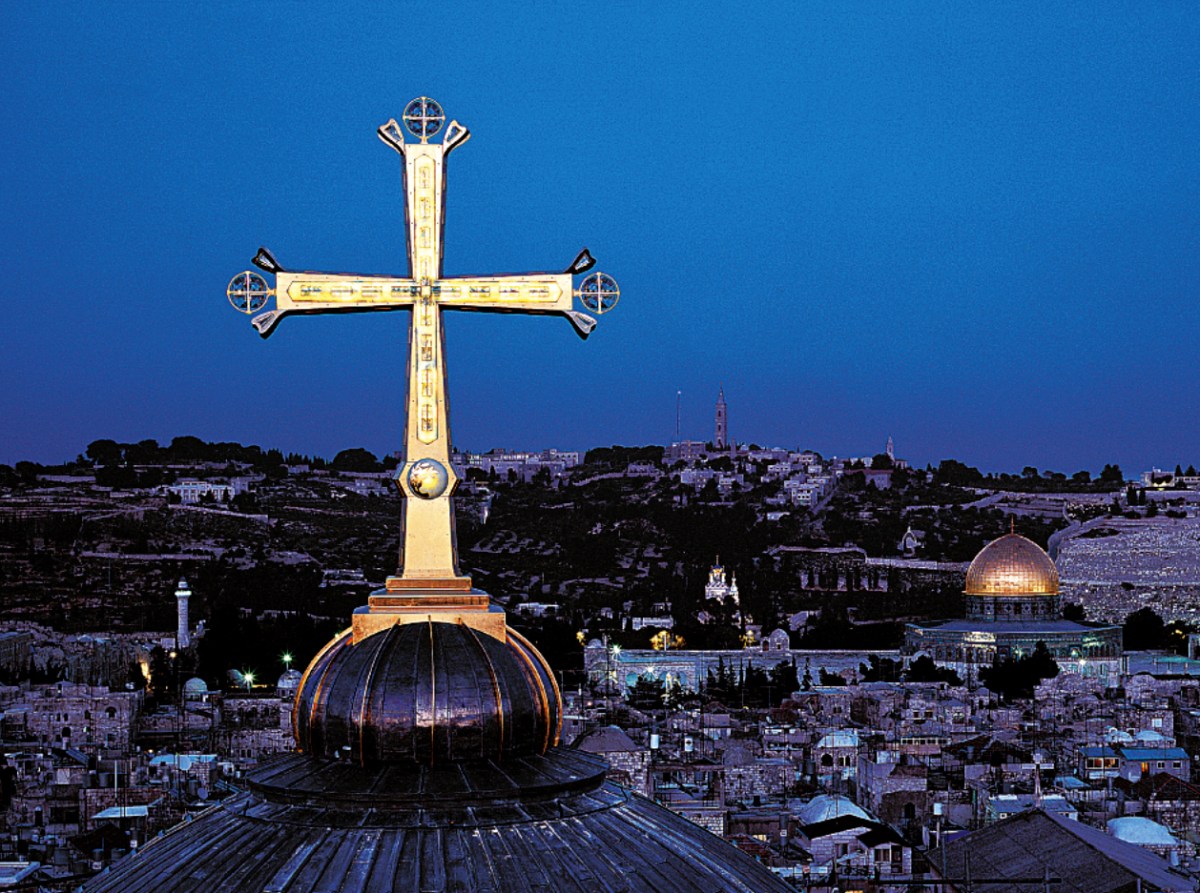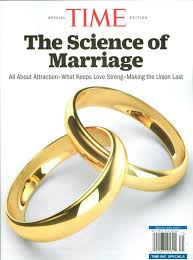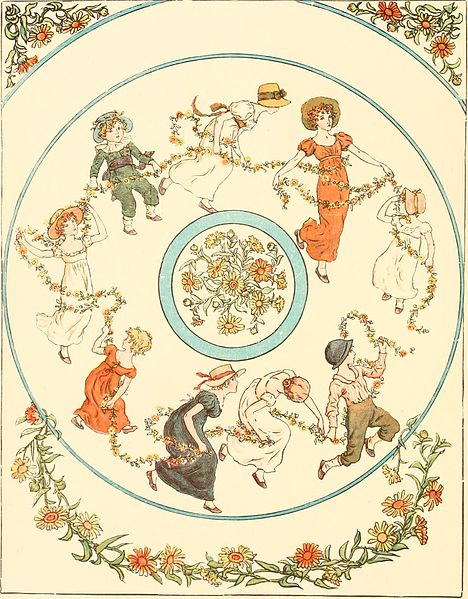Do everything without complaining or arguing. – Philippians 2:14
Sacred Scripture makes it pretty clear that our tongues were meant for building up the Kingdom – not for tearing it down; and yet, have you ever noticed how much conversation  in a given day focuses on the negative?
in a given day focuses on the negative?
So Many Complaints, So Little Time
Here is just a brief brainstormed list of conversation topics I have overheard or participated in on any given day. How many have escaped your lips today?
bad weather
bad service
bad food
bad leaders
poor sleep
lack of sleep
late nights
early mornings
lack of exercise
lacking the will to exercise
poor diet
lack of self-discipline
sickness
aches and pains
blemishes
messy home
too much to do
strained relationships
ugly culture
bad government
poor entertainment
cultural demise
your mistakes
the mistakes of others
your faults
the faults of others
obstacles in our day
financial difficulties
unmet goals
unattained dreams
disrespectful kids
frustrating neighbors
annoying relatives
your fears
your doubts
news
news
and more news
None of us likes to spend time with chronic complainers. They bring us down, and they tend to make for pretty miserable company. So given that we are readily annoyed when we spend time with friends or family who pour their energy into all that’s wrong with the world, why do we spend so much of our time on complaints and negativity?
Maybe because they work – in the short run.
Have you noticed that a negative comment can drive a conversation like nothing else? Try announcing at your next meeting that you arrived on time, without incident and even enjoyed a lovely prayer during the drive. Chances are, you’ll get a few smiles, and “That’s nice.” Or, depending on the culture in which you work, everyone may look at you like you’re nuts, even raising an eyebrow or two, before turning back to the more stimulating conversation at hand. However, when you rush in, complaining about the five car pile-up that stopped traffic for 30 minutes or you rue the horrible weather and the terror you experienced as you nearly ran off the road, people will hang onto your every word, riveted by all the excitement.
When you go negative, you have the floor.
In addition to offering something exciting to a conversation, doesn’t it seem that negativity provides a give and take of one-upmanship – often boiling down to a tennis match wherein we try to “outdo” others in sharing the trials and tribulations of life?
The 24-Hour News Cycle
It doesn’t help that the media provides us with fodder for negativity 24-hours-a-day. Clearly they “get” that our attention is riveted to the negative.
Once I heard a French priest talk about why he never listens to the news. “It take my joy,” he’d say in his beautiful accent. “Same news. Every day. Always sad. I no listen. But I pray. I know there is death. I know there is crime. I know bad things happen. I pray. But I no listen. I keep my peace. I keep my joy.”
I should take that advice. I’m sure my husband rues the day I learned I could have a News App on my phone – complete with notifications. It never fails that we’ll be enjoying a peaceful moment together when the familiar “ding” of a notification comes in, followed by my voice: “Oh my goodness! Violent protests to block free speech at X University?! Are you kidding me? What is this world coming to?!” Then comes my diatribe about youth of today and the horrors of our education system.
And of course, a story about protests inevitably leads to a discussion about politics – the ultimate in negativity.
Politicians Digging up Dirt
Think about all the ugliness in the political world this past year and a half. Campaigns seem to run on negative energy. And in each cycle someone ups the ante – the contest for who is most qualified to represent his fellow countrymen becomes a game of Who Can Dig up the Most Dirt. We, as citizens, express our utter shock and dismay – and then we turn around and talk about it with all our friends and acquaintances.
Politicians get it . And they capitalize on it. Rahm Emanuel, the Mayor of Chicago, once slipped, “You never let a serious crisis go to waste.” Sure, we all complain about campaign seasons or the media’s obsession with finding a new low (yet one more thing to complain about, of course); but secretly, we seem to relish in the latest gossip about the campaign antics of the day.
I don’t know about you, but I left this past election cycle with a nasty taste in my mouth. And today, with all the talk of protests and anger in the streets, it seems to me that there is a distinct relationship between negative talk and negative action. What are we teaching our children with all this negativity?
Peace Amidst the Storm
Which begs the question – does all this negativity bring peace?
Does complaining or negativity improve our lot one iota?
I submit that the French priest spoke for me when he said, “It take my joy.” Negativity and complaining take my joy. And I’m willing to bet they take yours too. Yet even though we know all the negativity isn’t good for us, somehow we are drawn to it. And just like any bad habit, we need to take proactive steps to make changes…
Put the Power in the Positive
I wonder what the world would be like – what our souls would be like – if each of us stopped complaining? If we filled our minds and hearts with positive messages?
It’s almost daunting to think of centering our world on the positive. But let’s see if we can do it. Let’s start small. One day. We can all do one day, can’t we?
Here are a few suggestions to get us started:
1.Be Grateful.
First and foremost, gratitude brings peace. And how can we possibly complain about something for which we are grateful? It helps to remember that everything that happens – from our alarm clock failing to go off to a burnt dinner or a messy house – is allowed by God for His good purpose. And He assures us, that, come what may, we have reason to be thankful.
Have no anxiety about anything, but in everything by prayer and supplication with thanksgiving let your requests by made known to God. -Philippians 4:5-6
2. Say less. Listen more.
Maybe it’s just me, but in order to go through a day without mentioning any of the above, I might just have to be silent. Could it be that God had our temptation toward the negative in mind when he gave us the Psalms:
Set a Guard over my mouth, O Lord, keep watch over the door of my lips! -Psalm 141:3
Or Proverbs:
Even a fool who keeps silent is considered wise; when he closes his lips, he is deemed intelligent. – Proverbs 17:28
Instead of focusing on things to complain about, use that silence for prayer. The more you unite yourself to Christ, the more peace you are bound to find.
3. Turn off the news.
Spend the time you gained on spiritual reading. Spiritual reading has a way of bringing peace that we cannot find in the world, perhaps because of all the negativity inherent in the culture. In my new book, How to Read Your Way to Heaven, I talk about how spiritual reading “arms us for battle:”
…the more we fill our hearts with the love of Christ, the greater the light we bring to the darkness around us. Spiritual reading arms us for all those daily battles with negativity, temptation, and sin, filling our minds, hearts, and souls with truth, building us in Christ, and strengthening us for combat. (p. 16)
4. Disengage.
If your “friends” on social media engage in negativity or if they spew cutting remarks, sarcasm, block them or log off. And even if they don’t, Lent is a good time to get rid of excess “noise” and rest in the quiet of the Lord. You might be surprised at how much time you have to reflect in gratitude on all the gifts you’ve been given if you stop comparing yourself to your neighbor.
Be still and know that I am God. – Psalm 46:10
5. Avoid words like “Don’t.”
In my world, negative topics are not the only problem. Unfortunately, I even find myself saying the simplest things in a negative way. Whether telling my kids, “Don’t leave the door open” rather than saying, “Shut the door, please.” Or “Don’t eat with your mouth open, please” rather than “Chew with your mouth closed.” I heard once that when you direct your child in a negative way, it’s more difficult for them to obey because you force them to double think. First, they have to think about what you’re telling them not to do; and then they have to process the opposite; finally, they have to do the opposite. Way too much work.
6. Do something positive.
If the world is falling apart, don’t tell people about it; do your part to help put it back together. Think of that one thing that causes you the most frustration. Now do something about it.
You are the light of the world. A city set on a hill cannot be hidden. Nor do people light a lamp and put it under a basket, but on a stand, and it gives light to all in the house. In the same way, let your light shine before others, so that they may see your good works and give glory to your Father who is in heaven.- Matthew 5:14-16
Note: Need Biblical inspiration? Check out these verses and replace all that complaining with something positive: Philippians 2:14; Ephesians 4:29; James 5:9; Numbers 11:1-4; 1 Thessalonians 5:18; 1 Corinthians 10:10; Exodus 16:8; Philippians 4:11-12; Philippians 2:12-16; Isaiah 53:7; Proverbs 17:22; James 1:2-4; Colossians 3:12; Philippians 4:6; 2 Timothy 1:7; Proverbs 25:28; Colossians 3:17; Psalm 95:2-3; Colossians 2:6-7.
Art: Le malade imaginaire: Argan, a hypochondriac, complaining of his ailments to his nurse. ; Pen and ink drawing by L. Frölich, 1859.
 from sight. During Lent, the Church recommends—and even obliges in some matters—that the liturgy be stripped of those elements that communicate the fullness of Easter joy so that the reality of this penitential time might be more apparent. For example, no flowers are permitted and musical instruments are silenced (except for last week’s Lætare Sunday celebration), the Gloria is omitted, fewer Saints’ days are commemorated, and so forth. And now, as we enter into the final two weeks of Lent, many parishes will observe the longstanding tradition of stripping away even the crosses and sacred images from the church—a poignant reminder of how Christ Himself shed His heavenly glory to become a man for our sake… even to the point of death.
from sight. During Lent, the Church recommends—and even obliges in some matters—that the liturgy be stripped of those elements that communicate the fullness of Easter joy so that the reality of this penitential time might be more apparent. For example, no flowers are permitted and musical instruments are silenced (except for last week’s Lætare Sunday celebration), the Gloria is omitted, fewer Saints’ days are commemorated, and so forth. And now, as we enter into the final two weeks of Lent, many parishes will observe the longstanding tradition of stripping away even the crosses and sacred images from the church—a poignant reminder of how Christ Himself shed His heavenly glory to become a man for our sake… even to the point of death. es Borromeo Parish in Gretna, Nebraska. Ordained in 2000, Fr. Loseke holds a Licentiate in Sacred Theology (S.T.L.) from the Pontifical Athenaeum of St. Anselm in Rome and is working to complete his doctoral degree (Ed.D.) in interdisciplinary leadership through Creighton University in Omaha. In addition to parish ministry, Fr. Loseke has served as a chaplain in the U.S. Air Force, taught high school theology and college-level philosophy, and has been a presenter for various missions, retreats, and diocesan formation days across the country.
es Borromeo Parish in Gretna, Nebraska. Ordained in 2000, Fr. Loseke holds a Licentiate in Sacred Theology (S.T.L.) from the Pontifical Athenaeum of St. Anselm in Rome and is working to complete his doctoral degree (Ed.D.) in interdisciplinary leadership through Creighton University in Omaha. In addition to parish ministry, Fr. Loseke has served as a chaplain in the U.S. Air Force, taught high school theology and college-level philosophy, and has been a presenter for various missions, retreats, and diocesan formation days across the country.





 Lent and invites us to begin experiencing the joy of the Resurrection even as we continue our journey to the Cross. Hopefully, our Lenten practices and penances have been chipping away at our hardened hearts so that they are already being freed from temptation and slavery to sin through God’s grace. Our works alone are incapable of effecting this interior change, however. Only in cooperation with God’s work do we experience the movement from darkness to light.
Lent and invites us to begin experiencing the joy of the Resurrection even as we continue our journey to the Cross. Hopefully, our Lenten practices and penances have been chipping away at our hardened hearts so that they are already being freed from temptation and slavery to sin through God’s grace. Our works alone are incapable of effecting this interior change, however. Only in cooperation with God’s work do we experience the movement from darkness to light. es Borromeo Parish in Gretna, Nebraska. Ordained in 2000, Fr. Loseke holds a Licentiate in Sacred Theology (S.T.L.) from the Pontifical Athenaeum of St. Anselm in Rome and is working to complete his doctoral degree (Ed.D.) in interdisciplinary leadership through Creighton University in Omaha. In addition to parish ministry, Fr. Loseke has served as a chaplain in the U.S. Air Force, taught high school theology and college-level philosophy, and has been a presenter for various missions, retreats, and diocesan formation days across the country.
es Borromeo Parish in Gretna, Nebraska. Ordained in 2000, Fr. Loseke holds a Licentiate in Sacred Theology (S.T.L.) from the Pontifical Athenaeum of St. Anselm in Rome and is working to complete his doctoral degree (Ed.D.) in interdisciplinary leadership through Creighton University in Omaha. In addition to parish ministry, Fr. Loseke has served as a chaplain in the U.S. Air Force, taught high school theology and college-level philosophy, and has been a presenter for various missions, retreats, and diocesan formation days across the country.
 how to love God, how to love their neighbor, and how to constantly practice their faith. These exhortations always remind me that, because of our fallen human nature and the inclination to sin (i.e., concupiscence), the love to which God calls us must be learned and practiced over time. Learning such a love does not necessarily come easily. Indeed, the acquisition of virtue is often—if not always—a painful process.
how to love God, how to love their neighbor, and how to constantly practice their faith. These exhortations always remind me that, because of our fallen human nature and the inclination to sin (i.e., concupiscence), the love to which God calls us must be learned and practiced over time. Learning such a love does not necessarily come easily. Indeed, the acquisition of virtue is often—if not always—a painful process.
 in a given day focuses on the negative?
in a given day focuses on the negative?
 in our own identity as Christians, who, like Paul, never met Jesus in the flesh. There can be no doubt that Christianity would look very differently today—if it existed at all!—without the efforts of St. Paul and his companion missionaries. For this reason, the Church has always regarded St. Paul as a model for evangelization and as one of the principal architects of the Church. Saint Paul’s missionary strategy (i.e., establishing a communal identity among new believers) is precisely what the Catholic Church has always understood as “Sacred Tradition.” Saint Paul and the other Apostles modeled their style of leadership after that of Jesus Christ and passed it on in a living Tradition. Jesus gathered His closest followers around Himself and, for a period of about three years, established a way of life that would give them their identity as His Apostles. He did not hand them a book of instructions; rather, He enjoined upon them a way of life, a communal identity, a Sacred Tradition. They in turn passed it on to the next generation.
in our own identity as Christians, who, like Paul, never met Jesus in the flesh. There can be no doubt that Christianity would look very differently today—if it existed at all!—without the efforts of St. Paul and his companion missionaries. For this reason, the Church has always regarded St. Paul as a model for evangelization and as one of the principal architects of the Church. Saint Paul’s missionary strategy (i.e., establishing a communal identity among new believers) is precisely what the Catholic Church has always understood as “Sacred Tradition.” Saint Paul and the other Apostles modeled their style of leadership after that of Jesus Christ and passed it on in a living Tradition. Jesus gathered His closest followers around Himself and, for a period of about three years, established a way of life that would give them their identity as His Apostles. He did not hand them a book of instructions; rather, He enjoined upon them a way of life, a communal identity, a Sacred Tradition. They in turn passed it on to the next generation.
 Gospel. In fact, the amount of space in each Gospel that is given to the three days of Jesus’ Passion (20%-30%) is inordinately disproportionate to the space given to all the preceding events that make up the other three years of His life. This tells us just how significant Jesus’ Paschal Mystery was to the faith of the Evangelists and the early Christian communities. More than all of His miracles, teachings, and parables, Jesus’ Passion stands out as the single most important thing He did on this earth.
Gospel. In fact, the amount of space in each Gospel that is given to the three days of Jesus’ Passion (20%-30%) is inordinately disproportionate to the space given to all the preceding events that make up the other three years of His life. This tells us just how significant Jesus’ Paschal Mystery was to the faith of the Evangelists and the early Christian communities. More than all of His miracles, teachings, and parables, Jesus’ Passion stands out as the single most important thing He did on this earth.
 describes. (If you get stuck, answers are listed at the very bottom of this post.)
describes. (If you get stuck, answers are listed at the very bottom of this post.)
 unrecognizable sweaty clump of weeds. There is a sacred element to the gift as a result, not of its quality, but of the depth of the child’s desire to please. That desire is evident in the exuberant bounce of the step, the excited thrust of the gift into her open palms, the devoted gaze and the joyful anticipation of mother’s reaction as she receives such a loving gesture.
unrecognizable sweaty clump of weeds. There is a sacred element to the gift as a result, not of its quality, but of the depth of the child’s desire to please. That desire is evident in the exuberant bounce of the step, the excited thrust of the gift into her open palms, the devoted gaze and the joyful anticipation of mother’s reaction as she receives such a loving gesture.